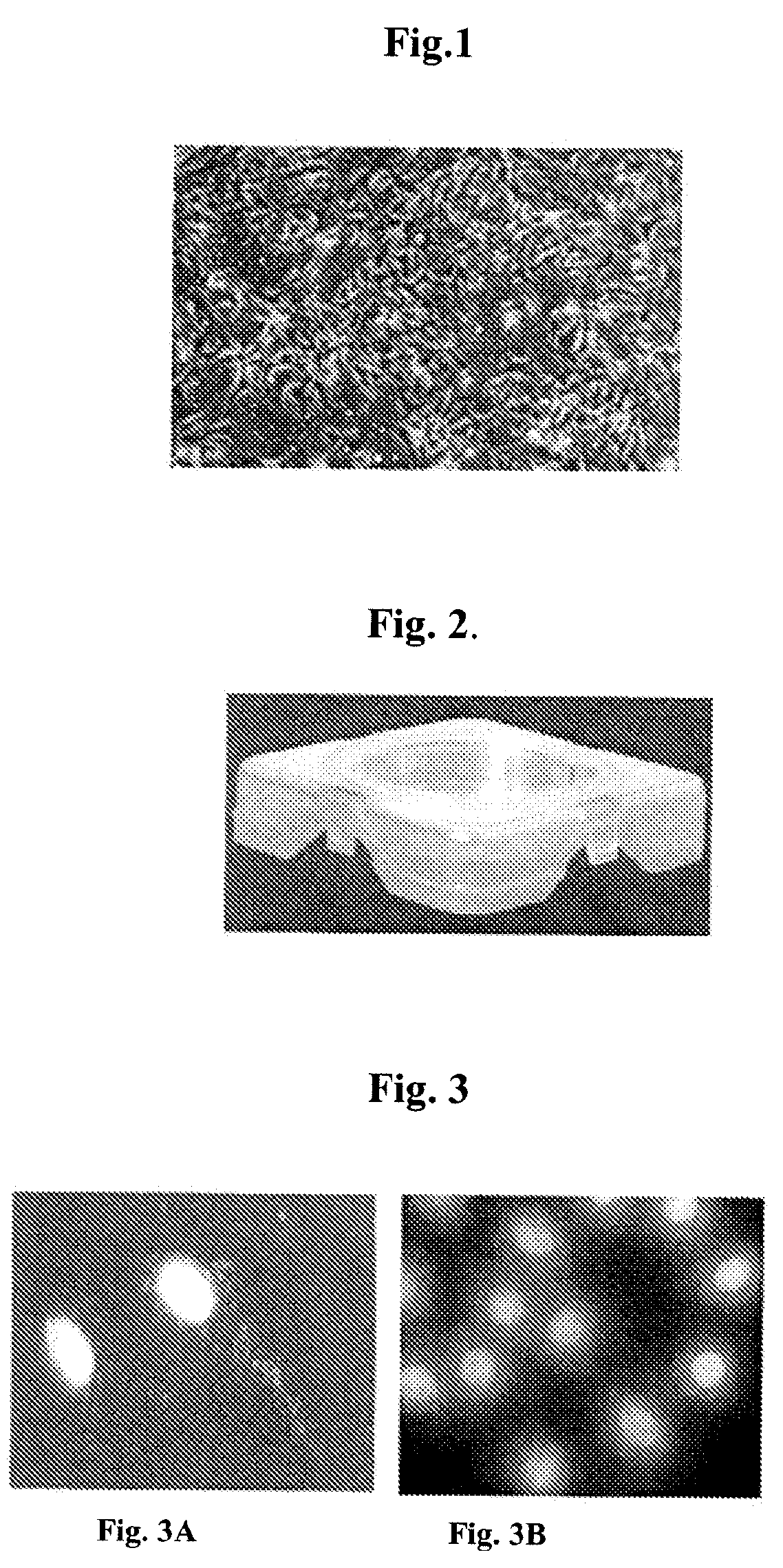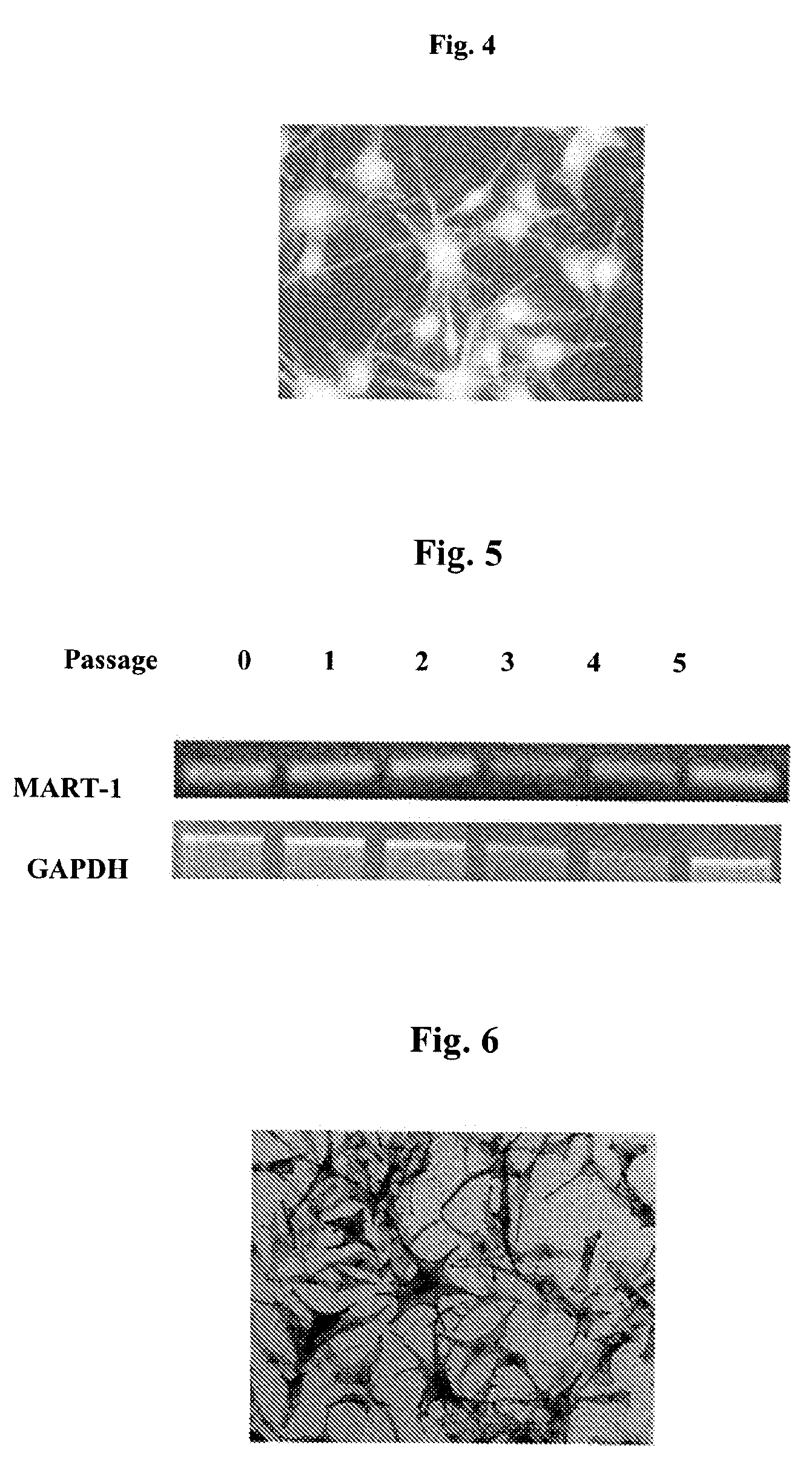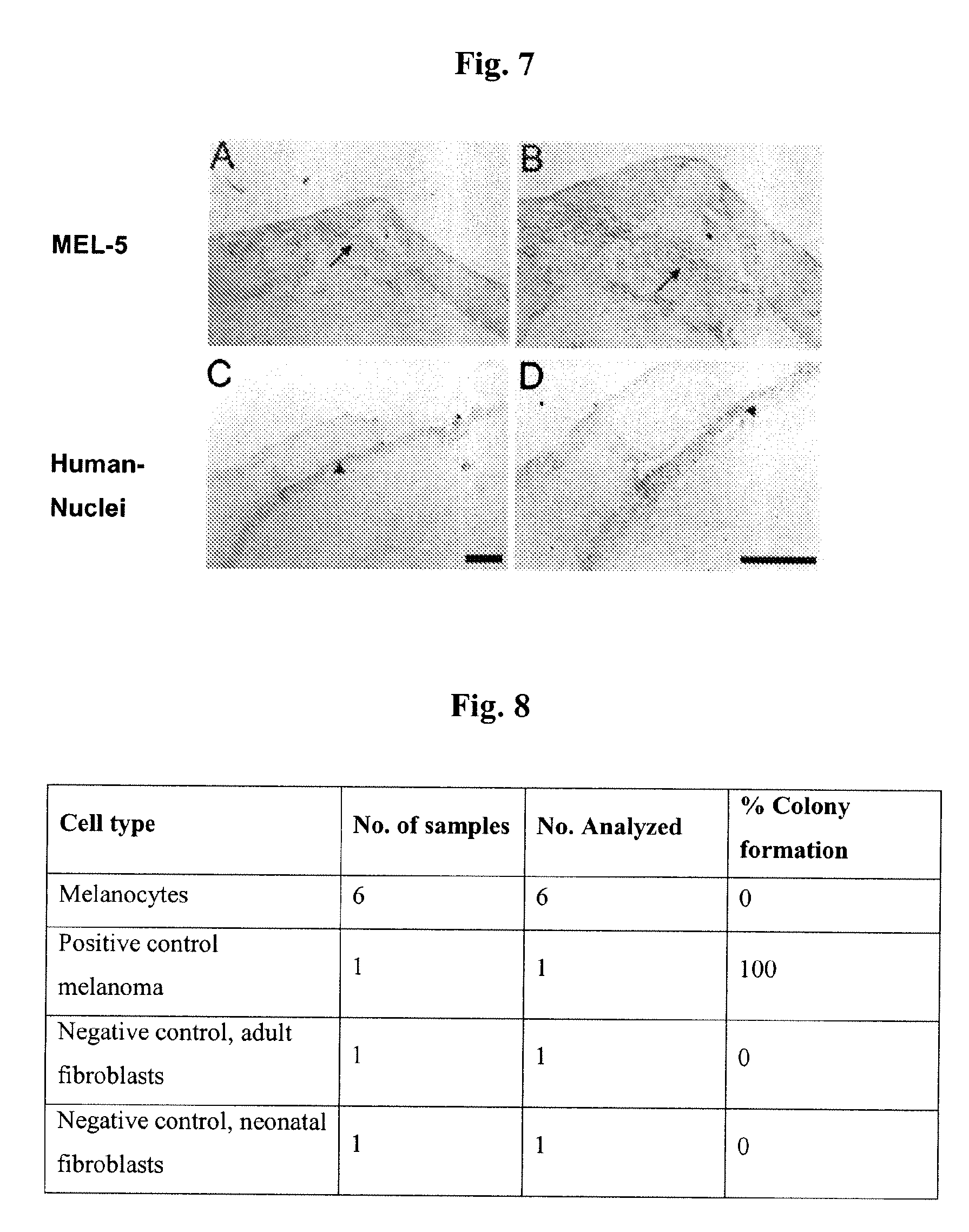Cultured Melanocytes on Bioploymer Membranes for Treatment of Hyper and Hypopigmentation Disorders
a melanocyte and membrane technology, applied in the field of skin melanocyte delivery system, can solve the problems of cell genetic coding or dna mutation, cell function, aging skin,
- Summary
- Abstract
- Description
- Claims
- Application Information
AI Technical Summary
Benefits of technology
Problems solved by technology
Method used
Image
Examples
example 1
Preparation of Cultured Melanocyte Graft on Biopolymer
Collection of the Skin
[0101] A punch biopsy was collected from the person who needs to be grafted hereto referred to as patient. Patient's blood (5 ml) was collected for infectious disease testing to determine the ID status of the patient to ensure safety to the operator as well as the patient at the time of transplantation. Skin biopsy collection vials containing DMEM, Iscove medium (Invirtrogen USA), 10% fetal bovine serum (FBS) (Hyclone, USA), antibiotic-antimycotic solution (Sigma USA) and gentamycin (Invitrogen, USA) were transported to hospitals in insulated boxes containing ice-packs. The insulated boxes were made of EPS (expanded polystyrene) and maintained at a temperature of 8-25° C. for 72 hours. The vials were stored in the refrigerator for a maximum of one week till use. The biopsies were collected in these transport vials and shipped back in insulated boxes for further processing within 48 hours of sample collect...
example 2
Co-Culture Techniques
[0116] The application of keratinocytes to skin resulted in enhanced rate of epithelialization and improved the rate of healing of the wound that is produced following debridement of the de-pigmented skin.
[0117] Keratinocytes were obtained either from the patient undergoing melanocyte treatment or from another donor. FIG. 10 shows the co-cultured cells on a biopolymer. When using cultured keratinocytes obtained from the patient directly, keratinocytes will continue to survive for a longer time and form part of the reconstituted epithelia. The application of allogeneic cultured keratinocytes will enhance the rate of healing by stimulating the body to regenerate even if these cells only survive temporarily, however.
example 3
Transport of the Graft of Cultured Melanocyte Biopolymer
[0118] There are no previous reports of transportation of melanocytes beyond a hospital. The present invention demonstrates how such portability may be achieved.
[0119] An example design of a transport container, its assembly, and use in transport of cultured cells is presented in Indian patent application 60 / MUM / 2006, which is incorporated herein by reference. The design of the container is shown in FIG. 2. Sterilized PLA films were placed in these transport dishes and soaked in PBS for 1 hour. The film in each dish was held in place with polycarbonate ring. The cells were seeded with 3-5×104 cells / cm2 and cultured for 2 days before transport. Before dispatching to hospitals, the media in the dishes were replaced with CO2 enriched culture media using a flow meter. Sterilized PLA films were placed in specially designed transport dishes (Ampson, India) and soaked in PBS for 1 h. The film in each dish was held in place with poly...
PUM
| Property | Measurement | Unit |
|---|---|---|
| molecular weight | aaaaa | aaaaa |
| time | aaaaa | aaaaa |
| melting point | aaaaa | aaaaa |
Abstract
Description
Claims
Application Information
 Login to View More
Login to View More - R&D
- Intellectual Property
- Life Sciences
- Materials
- Tech Scout
- Unparalleled Data Quality
- Higher Quality Content
- 60% Fewer Hallucinations
Browse by: Latest US Patents, China's latest patents, Technical Efficacy Thesaurus, Application Domain, Technology Topic, Popular Technical Reports.
© 2025 PatSnap. All rights reserved.Legal|Privacy policy|Modern Slavery Act Transparency Statement|Sitemap|About US| Contact US: help@patsnap.com



